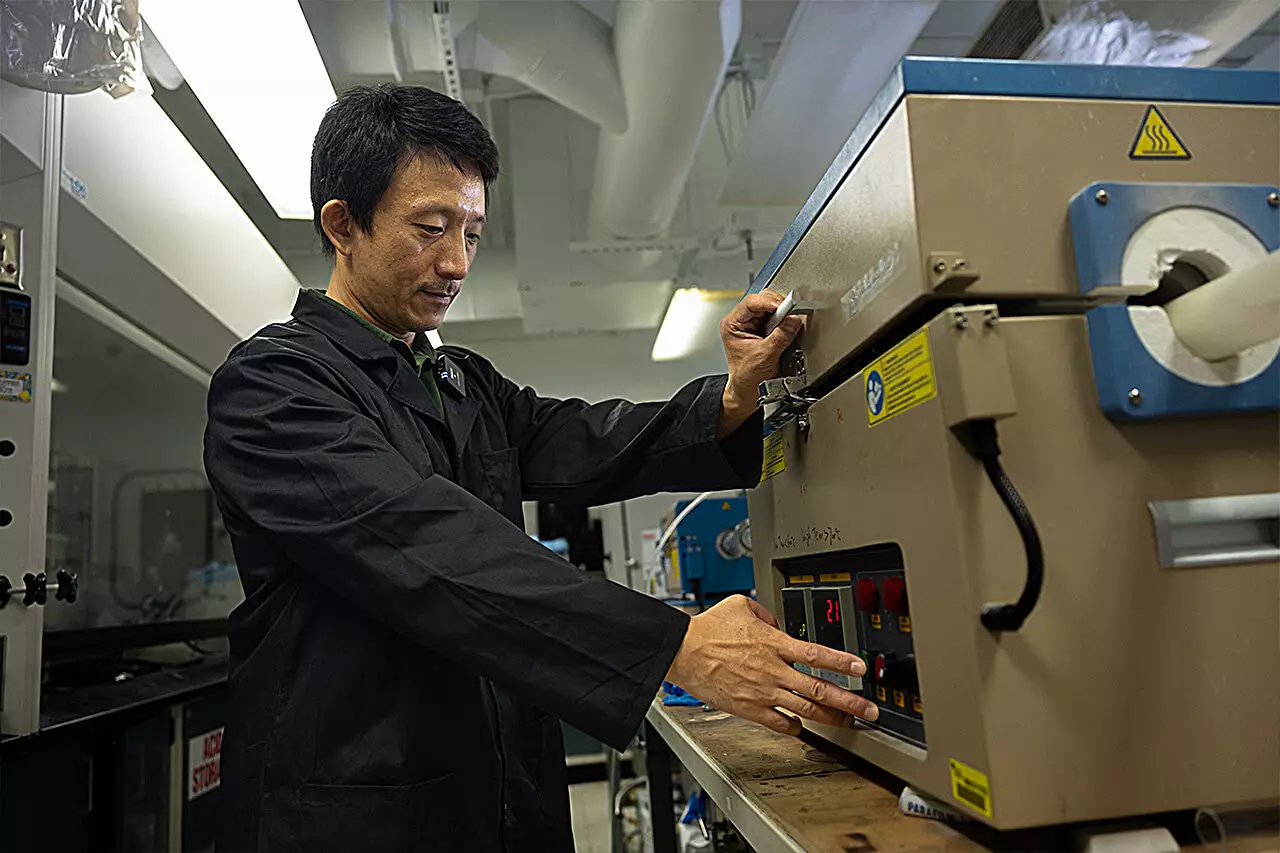As the world grapples with the crisis of climate change, innovative solutions are essential for curbing carbon dioxide emissions. Researchers are continuously seeking ways to mitigate the harmful environmental effects of carbon emissions, and one promising development comes from the University of Central Florida (UCF). Led by Yang Yang, an associate professor at UCF’s NanoScience Technology Center, this pioneering research introduces a novel technology that not only captures carbon dioxide but also converts it into useful products.
Yang’s device employs a unique design featuring a microsurface composed of a tin oxide film and a fluorine layer, specially engineered to allow for efficient CO2 capture. The process begins with a bubbling electrode that extracts gaseous carbon dioxide from the atmosphere. Once captured, the device selectively converts CO2 into valuable chemicals such as carbon monoxide and formic acid. These substances serve as fundamental building blocks for various industrial applications, thus turning a harmful gas into economically beneficial products.
This technology addresses two significant global challenges: the urgent need for carbon footprint reduction and the pursuit of alternative energy sources. Yang’s mission is clear: to innovate technologies that create a cleaner, more sustainable world. He emphasizes the critical threat posed by escalating carbon dioxide levels, which potentially lead to catastrophic greenhouse effects. His work exemplifies a step forward in combating climate change while simultaneously fulfilling energy needs.
Inspiration from Nature: Mimicking the Lotus Leaf
What’s particularly intriguing about Yang’s research is its inspiration drawn from nature. He references the lotus plant, which features a hydrophobic surface that effectively repels water. This property allows the lotus to avoid becoming waterlogged and maintains its ability to photosynthesize efficiently. Yang’s team analyzed the mechanics of the lotus to model the surface of their carbon capture device. They designed a surface that facilitates the separation of water and carbon dioxide, crucial for maintaining productivity in the conversion process.
This biomimicry exemplifies how scientists can learn from natural mechanisms to solve modern-day problems. Yang’s reference to the essential role of green plants in the CO2-oxygen cycle highlights the synergy between ecological insight and technological advancement. By mimicking such natural processes, researchers like Yang aspire to create solutions that are not only functionally effective but also environmentally sustainable.
Once carbon dioxide is captured, the real innovation unfolds during the conversion process. The electrocatalytic carbon dioxide reduction reaction allows Yang’s device to convert CO2 into a variety of carbon-containing chemicals, such as methanol, methane, and ethanol. This flexibility in conversion pathways enhances the utility of the captured carbon dioxide, catering to different industrial needs.
However, a significant challenge persists. Managing the presence of water during the conversion is crucial; excessive moisture can lead to the formation of hydrogen instead of the desired chemical products. Yang’s team has developed materials that help repel water, thereby optimizing reaction conditions and partaking in a sustainable cycle where energy efficiency is paramount. By minimizing water’s interference, the device can maximize its efficient processing of carbon dioxide, addressing one of the key obstacles in carbon capture technology.
Yang’s carbon capture and conversion technology is designed to be implemented across various facilities, including power plants and chemical manufacturing plants. By integrating this advanced device, industries can capture their emissions and convert them into usable chemicals, paving the way for a circular economy where waste products become resources.
Moreover, Yang is aiming to enhance the system’s feasibility by leveraging renewable energy sources, such as solar and wind, for powering these carbon conversion processes. Harnessing intermittent electricity sources aligns with global sustainability goals and complements the technological framework Yang is developing.
Moving forward, Yang’s research marks a foundational milestone in the quest for large-scale carbon capture strategies. With ongoing validation and experiments, there’s optimism around scaling up the device, potentially leading to prototypes capable of significantly reducing atmospheric CO2 concentrations and generating chemicals at an increased pace.
Yang’s groundbreaking research not only showcases UCF’s commitment to sustainability but also highlights the collaborative efforts involving multiple universities and research entities. This interdisciplinary approach enriches the development of practical carbon capture technologies aimed at alleviating climate change impacts. As industry and academia join forces in this important endeavor, Yang’s innovations offer hope for a cleaner and more sustainable future, transforming environmental challenges into opportunities for progress.


Leave a Reply